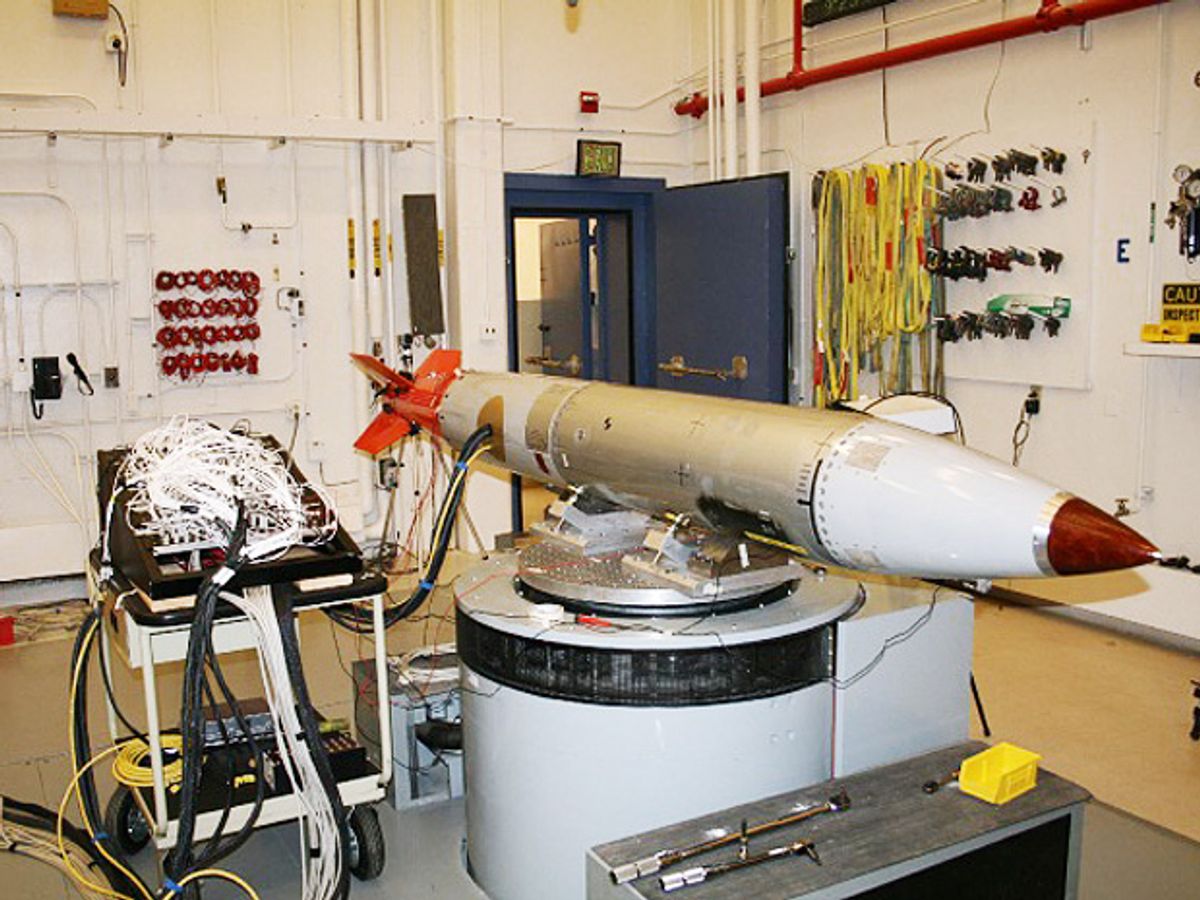Treat the test subject very, very carefully. It’s a thermonuclear bomb.
The B61 is an American tactical gravity device (a relatively low-energy bomb dropped from aircraft rather than carried on a missile) with a variable, 0.3-to-340-kiloton yield. It was designed in the early 1960s; the U.S. made some 3 100 B61s, in a number of different configurations, for deployment at home and in Europe.
Today (according to nuclear-weapons watchdogs at The Bulletin of the Atomic Scientists) about 200 B61s remain in service in the U.S. and 180 are deployed with NATO allies in Europe. While the U.S. military continues to reduce the number of H-bombs, they're also trying keep the few that remain in good working order until they can be scrapped. Thus, the B61, along with three types of nuclear warheads for submarine-launched and other missiles, is the object of a $US 11 billion Life Extension Program (LEP) designed to keep them operational into the 2030s.
In the process, the Pentagon plans to modify the four current B61 models into a single configuration, the B61-12.
The National Nuclear Security Administration (NNSA, not to be confused with NSA or NASA) is responsible for maintaining, upgrading, and testing the devices, without using underground detonations. To accomplish this, in 2004 the NNSA broke ground or a new test facility at the Sandia National Laboratory, replacing installations that were as much as 50 years old. That was the start of a decade-long, two-phase Test Capabilities Revitalization. The program included, in the first phase, building resources like a seven-story flame test cell and a cross-wind test lab, and, in the second phase (just completed), building an improved sled track complex, mechanical shock and vibration facilities, a large-scale centrifuge, and an improved aero-sciences wind tunnel.
This week, the agency announced that it had completed the first full-system mechanical tests to certify that the new B61 will perform in both “normal and abnormal (accident)” environments. The data will help refine analytical models that will allow engineers at Sandia National Laboratories to evaluate existing components and to build whatever new hardware is necessary for the B61-12 conversion.
NNSA does not go into detail on the tests, except to say that it included the first tests of the integrated component and subsystem hardware, including the new B61-12 tail-kit assembly. The program tests subassembly and system-level mass properties and shock-and-vibration resistance. Last summer, NNSA announced the success of drop tests, to verify the performance of on-board radar systems (which include vacuum-tube components). Those tests were done by hoisting an unloaded bomb assembly into the air under a helicopter before releasing it to its gravitational fate.
Photo: National Nuclear Security Administration
Douglas McCormick is a freelance science writer and recovering entrepreneur. He has been chief editor of Nature Biotechnology, Pharmaceutical Technology, and Biotechniques.



